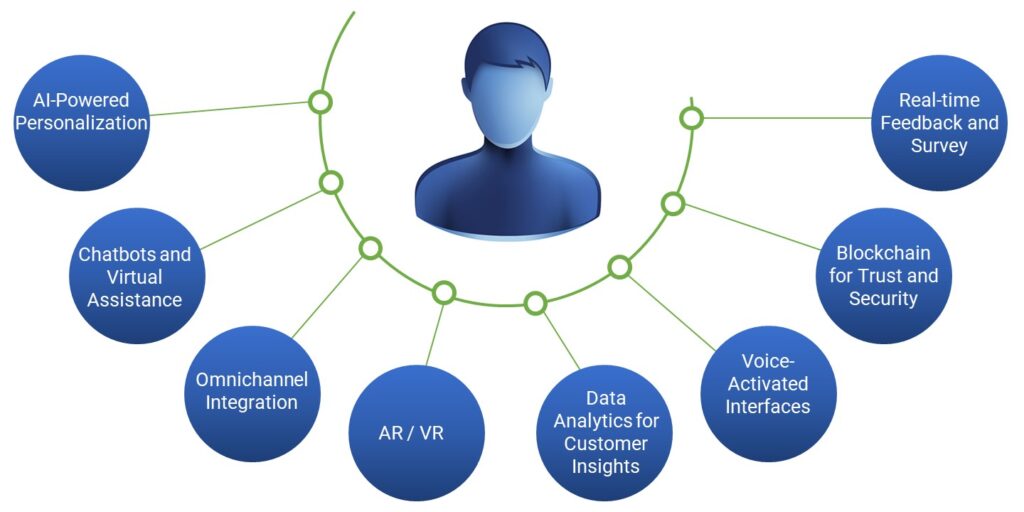
In today’s rapidly evolving digital landscape, technology plays a pivotal role in shaping and enhancing customer experiences. Businesses that leverage innovative technologies effectively can not only meet but exceed customer expectations, fostering loyalty and long-term relationships. AES highlights eight most insightful ways technology is influencing and revolutionizing the customer experience.
Businesses that embrace and integrate these technological advancements not only stay competitive but also create memorable and positive interactions that resonate with today’s tech-savvy consumers. According to McKinsey, consumer-focused digital transformation can increase the revenue of a company by 20% to 50%. B2B companies, in particular have experienced a revenue growth of 10% to 15% and cost reduction of 10% to 20%
The synergy between technology and customer experience is indeed a powerful catalyst for innovation, fostering lasting connections between businesses and their customers and securing business growth and sustainability in the digital age.
AI-Powered Personalization
Artificial Intelligence (AI) is at the forefront of transforming how businesses interact with their customers. Through sophisticated algorithms, AI analyzes customer data to deliver personalized experiences. From recommending products based on purchase history to tailoring marketing messages, AI ensures that each customer feels uniquely valued.
Chatbots and Virtual Assistants
The rise of chatbots and virtual assistants has revolutionized customer service. These automated tools provide instant responses to customer queries, offering round-the-clock support. Natural Language Processing (NLP) enables these systems to understand and respond to customer inquiries, enhancing efficiency and responsiveness.
Omnichannel Integration
Modern customers expect a seamless experience across various channels. Technology facilitates omnichannel integration, allowing businesses to maintain consistent communication and user experience whether customers interact through websites, mobile apps, social media, or in-store. This unified approach ensures a cohesive and integrated customer journey.
Augmented Reality (AR) and Virtual Reality (VR)
AR and VR technologies are breaking new ground in enhancing customer experiences, particularly in industries like retail and e-commerce. Customers can virtually try on products, visualize items in their own homes, or even experience virtual showrooms. These immersive technologies bridge the gap between the digital and physical realms, creating engaging and memorable interactions.
Data Analytics for Customer Insights
Big Data analytics provides invaluable insights into customer behavior, preferences, and trends. By harnessing data analytics, businesses can make informed decisions, anticipate customer needs, and tailor their products and services accordingly. This data-driven approach ensures a proactive and customer-centric strategy.
Real-Time Feedback and Surveys
Technology enables businesses to collect and analyze real-time feedback through surveys and customer sentiment analysis tools. This immediate feedback loop allows businesses to address concerns promptly, iterate on their products and services, and demonstrate a commitment to continuous improvement.
